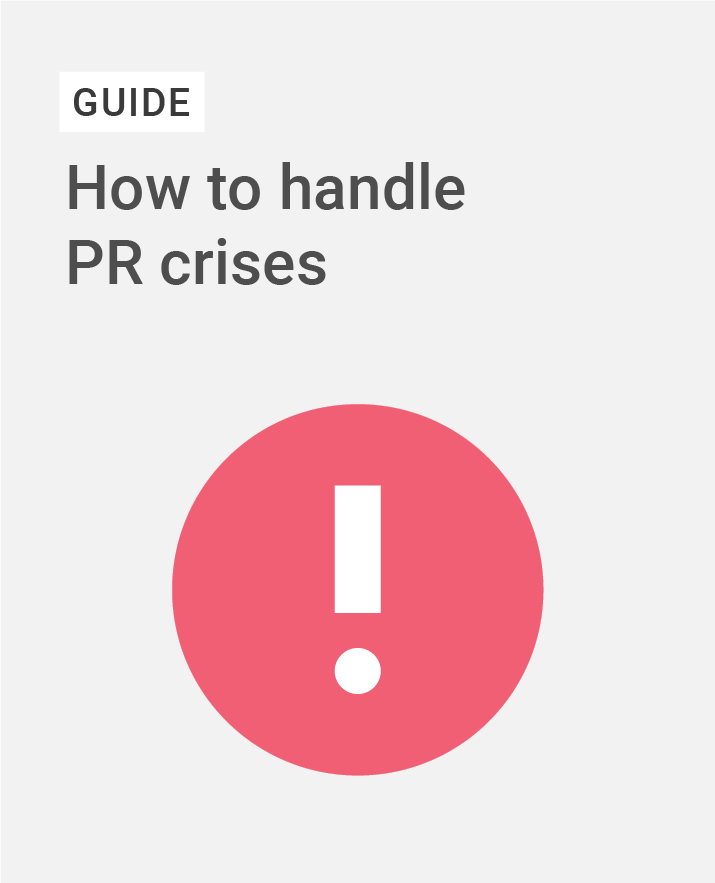As of January 2023, there were 5.16 billion internet users worldwide and, with social media so accessible, consumers have the power to question and influence how businesses operate. That’s why crisis management planning is critical for companies to maintain a healthy brand image and make better decisions when times are tough.
Not only do consumers have more power over how brands are perceived, they also have high standards. According to a recent study by Edelman, 64% of the general population expects the brands they purchase from to publicly communicate on current societal issues. And younger people in particular are comfortable challenging those brands that fail to maintain high standards when it comes societal issues.
No business is immune to crises, and there are many ways for things to go wrong. You may run a tight ship, but all it takes is one misstep to embroil your entire business in a huge scandal.
Our new crisis management guide will help you become an expert in the area of planning for and mitigating crises. It explains the whole process, from preventative measures to analyzing the aftermath.
To complement the guide, we’ve put together a list of six specific essentials to make sure, whatever the crisis, you can deal with it effectively.
1. A clear and organized team
A crisis hits and the sooner you act on it, the better. But who needs to know first? Who needs to start drafting a response? Who needs to investigate the issue?
Having a structured team with set roles for everyone is important. This eliminates any possible confusion and keeps everyone on their own task. Work isn’t doubled up, and you can be agile and swift in your response.
The main goal is that once something goes wrong, everyone knows exactly what they need to do without being told. You won’t have time to form a team and train them on the spot, so do it in advance.
2. A prepared and trained spokesperson
Speaking of set roles, you need to choose someone who will be your spokesperson. Hopefully you’ll never need them but, if someone needs to be interviewed by the press, you have to make sure they’re capable.
How we perceive a message is heavily influenced by the person delivering it. They could be telling the entire truth, but if their voice is shaky or they look nervous we instantly doubt what’s coming out of their mouth.
Consider running some drills with your spokesperson before, question and prod them about a fake crisis, and see how they handle it. It might even be worth it to invest in some public speaking lessons. Very few people are naturally good at facing a hostile press.
3. Clear sign-off process
One of the worst parts of a crisis is how easy it is to make it worse. And a really easy way to make it worse is for someone to say something they shouldn’t.
Whether it’s a poorly fact-checked press release or a well-meaning but badly phrased tweet, someone acting on their own can quickly make things much worse. Hence the need for sign-off.
Make sure everyone knows who has the final okay on communications related to the crisis (or even all communications depending on the case). Not only does someone ultimately have responsibility and control, but it means you get more than one pair of eyes on any messaging.
4. A first contact list
Usually in a crisis you need to tread carefully with communications. Rushing out a public-facing press release can easily go wrong. Often you can take a bit of time before putting out a detailed response to the world.
But for other stakeholders, be they suppliers, investors, or major clients, you may need to be quicker in reassuring them about what’s going on. There’s nothing worse than dealing with an angry public and jittery investors at the same time.
Put together a list of all the people who will need to be contacted as soon as possible in the case of a problem. Think about the best person internally to contact and make sure they’re included in all discussions around the crisis. You should even prep your tone.
5. Social media response plan and process
Information, correct or incorrect, spreads like lightning through social media. This can make things difficult to control, which is why the guide suggests setting up monitoring in advance.
Make sure you know what to do with social when a crisis happens. Usually holding back on posting and reviewing any scheduled posts is a good start. But you also have to think about how you plan to reply to any messages from customers and the public.
Social media platforms are a double-edged sword in a crisis. Make sure you use them properly and keep them under control.
6. A collectively cool head
Finally, organization-wide panic is a perfect way to make everything go horribly wrong. Usually, with a plan in place and all of the above sorted, you can deal with everything quickly, communicate effectively, and avoid too much disruption or deviation.
That said, it’s a good idea to get your crisis team to meet regularly, refresh your plans, and keep everyone reassured. Make sure everyone knows the right procedures and the sign-off structure so that everything goes as it should.
Dealing with a crisis is never easy but, with the right setup in place, things can run much more smoothly.
Learn more about crisis management from our newest guide on crisis management.
